How to attract bees to your garden – 7 ways to entice more of these beneficial pollinators
Picking the right plants and adapting your gardening ethos can help to see more bees in your backyard

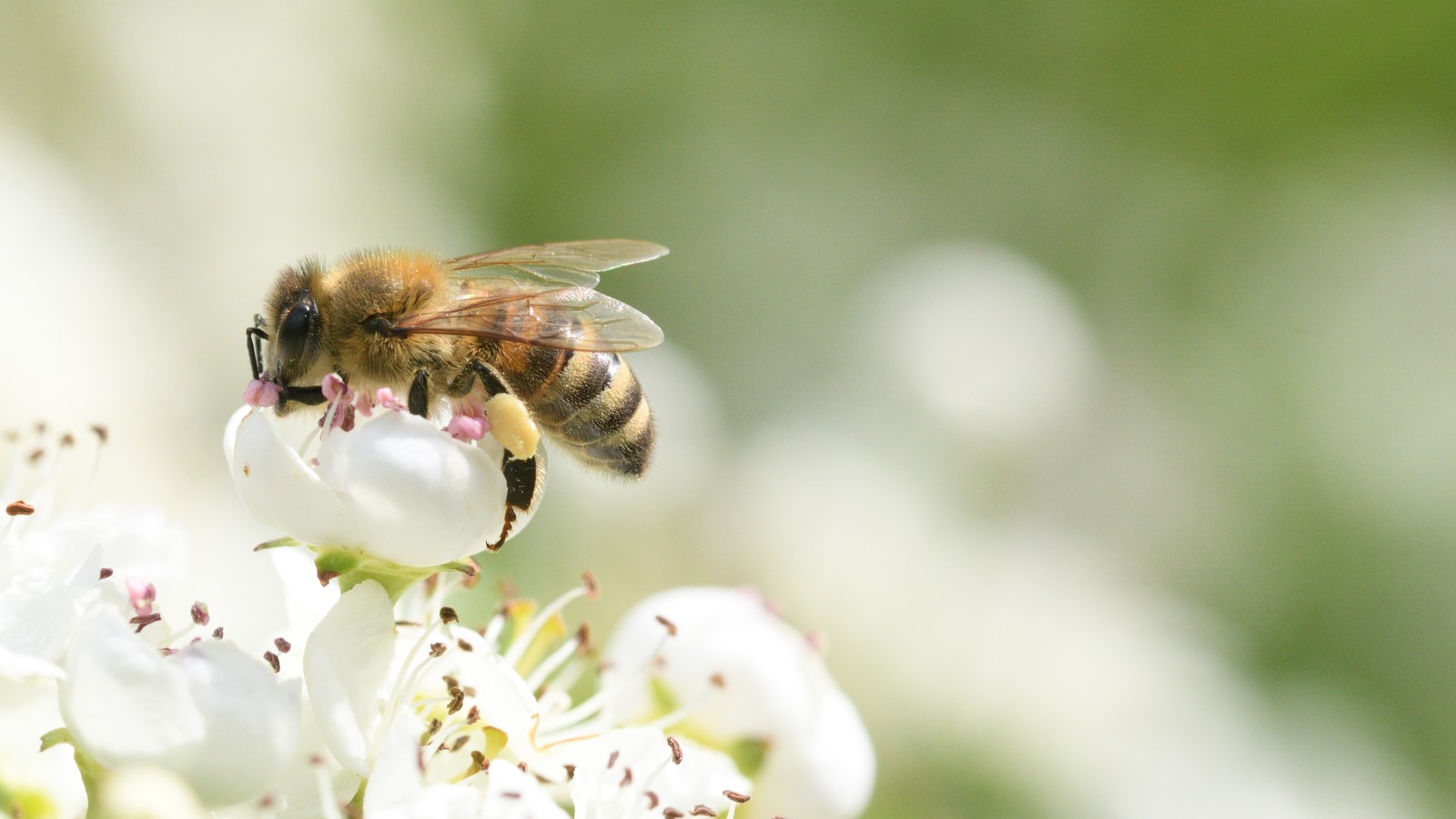
Bees are invaluable to a garden as they help to pollinate plants and without them there would be significantly less flowers, fruits and vegetables in the garden. There are some key ways you can help to entice and support bees into your garden, including providing them with a rich bounty of nectar and pollen that they are seeking.
By growing flowers that attract bees and picking a diverse range of plants it can help to get more bees into the garden. You can also help bees and other pollinators by changing your gardening mindset. Not using chemicals, letting the lawn grow long, and adding places for water and shelter specifically for bees can help increase their presence in your yard.
If you are wanting to discover how to attract bees to your garden, then we take a look at some key ways in which you can make a difference. Whether you are planning new borders or simply looking to make changes in the yard that can help attract bees, then there are simple ways to make your garden a haven for these valuable insects.

There is around 2.8 million honey bee hives in the US
What will attract bees to my garden?
There are many ways you can make changes to attract bees to your garden. Whether you are looking to make an eco-friendly garden, a wildflower garden, or looking for new small garden ideas, there is inspiration to take and implement into any space.
David M Burrows is managing director at Arkearth, which runs sustainable projects to help save honeybees and other pollinating species. He advises that bees are impacted by a range of factors, including available food, water, local climates, fencing, pesticides, and nearby accessible environmental features, but claims any space is capable of being a haven for bees.
He says: ‘No matter how big or small your space is, we can all do something to help these little guys survive and thrive.’
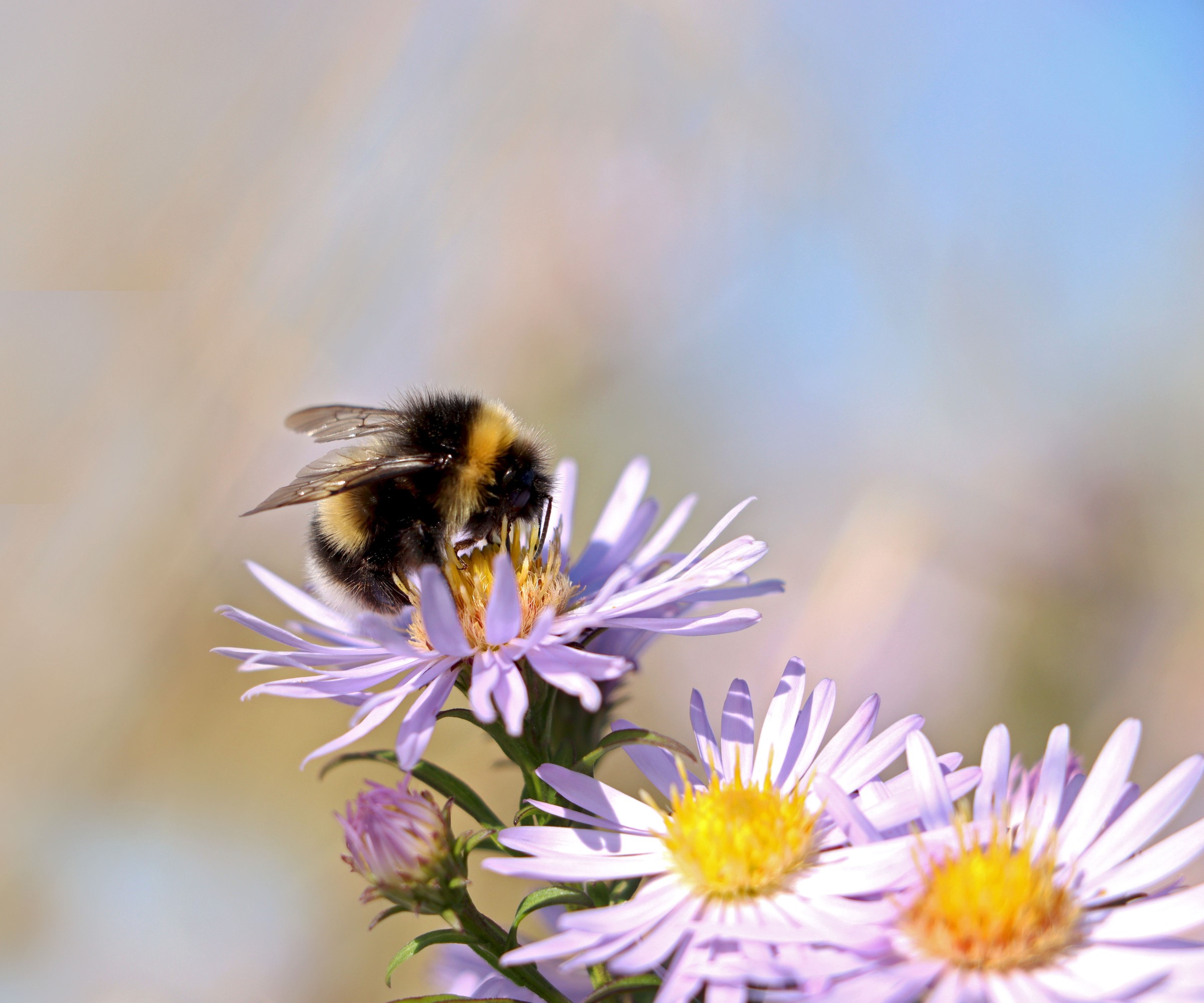
Bees are beneficial in gardens of any size when it comes to pollinating flowers
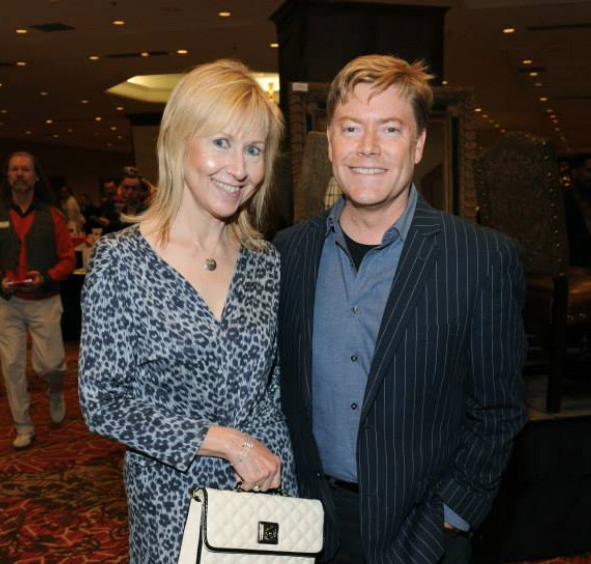
David M Burrows has 25+ years in start-ups for B2B and B2C concepts and he launched his latest in 2021 with his wife Margaret. Hivessence is an organic, sustainable honey-infused selfcare brand that works to save bees and other pollinators via Pollination Accelerator projects deployed by their non-profit Arkearth. It aims to save honeybees, butterflies, hummingbirds, moths, bats, and other pollinating species via a series of sustainable projects.
1. Introduce diverse plants
Growing flowers that attract bees is going to help guarantee that your backyard is brimming with bees and other pollinators. So, if you are planning a new flower bed, cut flower garden or wildlife garden, then you want to pick a good variety of diverse flowers.
Design expertise in your inbox – from inspiring decorating ideas and beautiful celebrity homes to practical gardening advice and shopping round-ups.
Choose plants with lots of different colors and also different shapes. There are thought to be 4,000 species of bees in the United States and they come in many different sizes and with different lengths of tongues. They also feed on different shapes of flowers, so filling a yard with a good mix can attract the widest range of bees possible. Try to pick as many single flowers as possible, such as many staple old cottage garden plants, as many double or multi-petalled flowers are difficult to access for lots of species of bees.
Also integrate a good mix of native plants and wildflowers, this is due to the fact that native insects favor native plants and wildflowers can support some rarer bee species. You can add wildflowers to a yard by planting wildflower seeds such as the The Old Farmer's Almanac Wildflower Pollinator Mix available at Walmart, making a wildflower seed bomb, or even create a wildflower meadow if you have the luxury of lots of space.
Allison Vallin Kostovick, garden author and creator of Finch and Folly, reiterates that ‘diversity is key’ and it reaps rewards to plan a diverse array of flowers and herbs.
She adds: ‘What’s wonderful about growing so many different flowers and herbs in my garden is to see which ones are the bee’s knees so to speak. In my garden, the bee’s flock the most to my Anise Hyssop, Echinacea, Phlox, Sunflowers and my oregano and catnip when they go to flower.’

Allison Vallin Kostovick is a long-time organic gardener with over 25 years of experience and the author of 'The Garden Maker's Book of Wonder', due to be published in August 2023 by Storey Publishing. She is also the creator of Finch + Folly, an educational website filled with advice and articles for gardeners.

Bees love dahlias that have an open centre
2. Plant in groups
When considering ways of attracting bees to your garden, plant your flowers in clumps to make it an ideal garden for pollinators. Bees will be attracted more to plants that are together in groupings rather than planted individually throughout a backyard.
Hilary Kearney, owner of Girl Next Door Honey and ambassador for Comvita Mānuka Honey, claims many people do not realize that bees ‘typically only visit one flower type per foraging trip’ for pollen or nectar.
She adds: ‘So, if you want to attract a lot of bees, you need to plant large groupings of the same flower species. Aim for a 3ft x 3ft patch of each variety and alternate them throughout the garden.
‘You should also consider planting large shrubs or flowering trees since they will create an extra-large grouping of one flower type all on their own.’
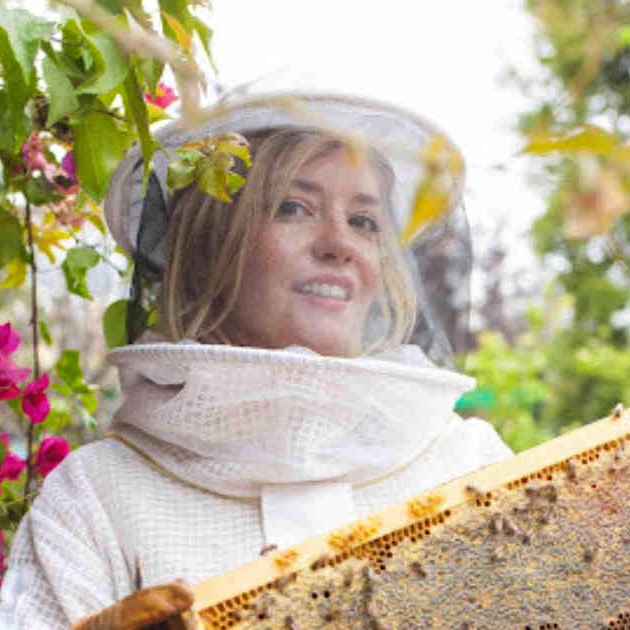
Hilary Kearney is a beekeeper and founded Girl Next Door Honey in 2012 in San Diego, California. The company focuses on bee-centric programs such as natural beekeeping classes, apiary management, classroom presentations, beehive tours and live bee removal. She is also an ambassador for the Comvita Mānuka Honey's bee rescue program that aims to save 40 million bees in the US.
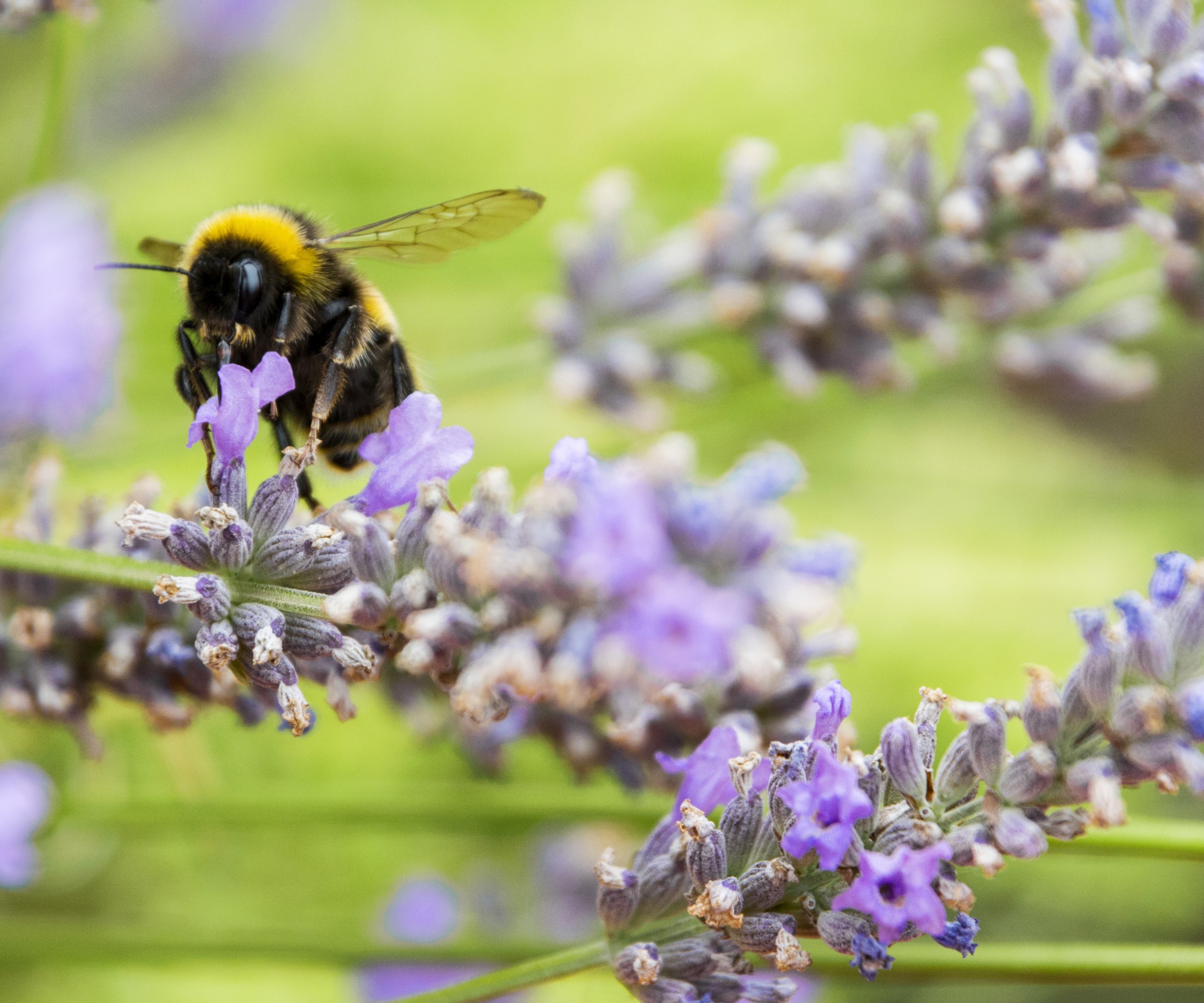
Groups of lavender can feed bees during spring and summer
3. Go for seasonal blooms
Bees require nectar and pollen year-round so, when picking plants for pollinators to add to your backyard, you want to have a long season of blooms. Making sure to have many different species flowering in succession over a long period of time can help support many bee species. This is primarily because different bee species are active at different times of the year, and you want some plants for fall pollinators as well as for bees out during the summer.
David M Burrows recommends that people think wider than just ‘spring wildflowers’ when trying to attract bees to a garden. He explains how he helps plan sustainable projects with a ‘timeline of continuous pollen and nectar producing plants’.
‘[The plants] will provide an on-going food supply to bees as well as keep gardens beautiful and blooming into the fall. Planned resources like this will ensure you'll see a nonstop parade of bees, butterflies, hummingbirds visiting your yard during spring, summer, and fall.’
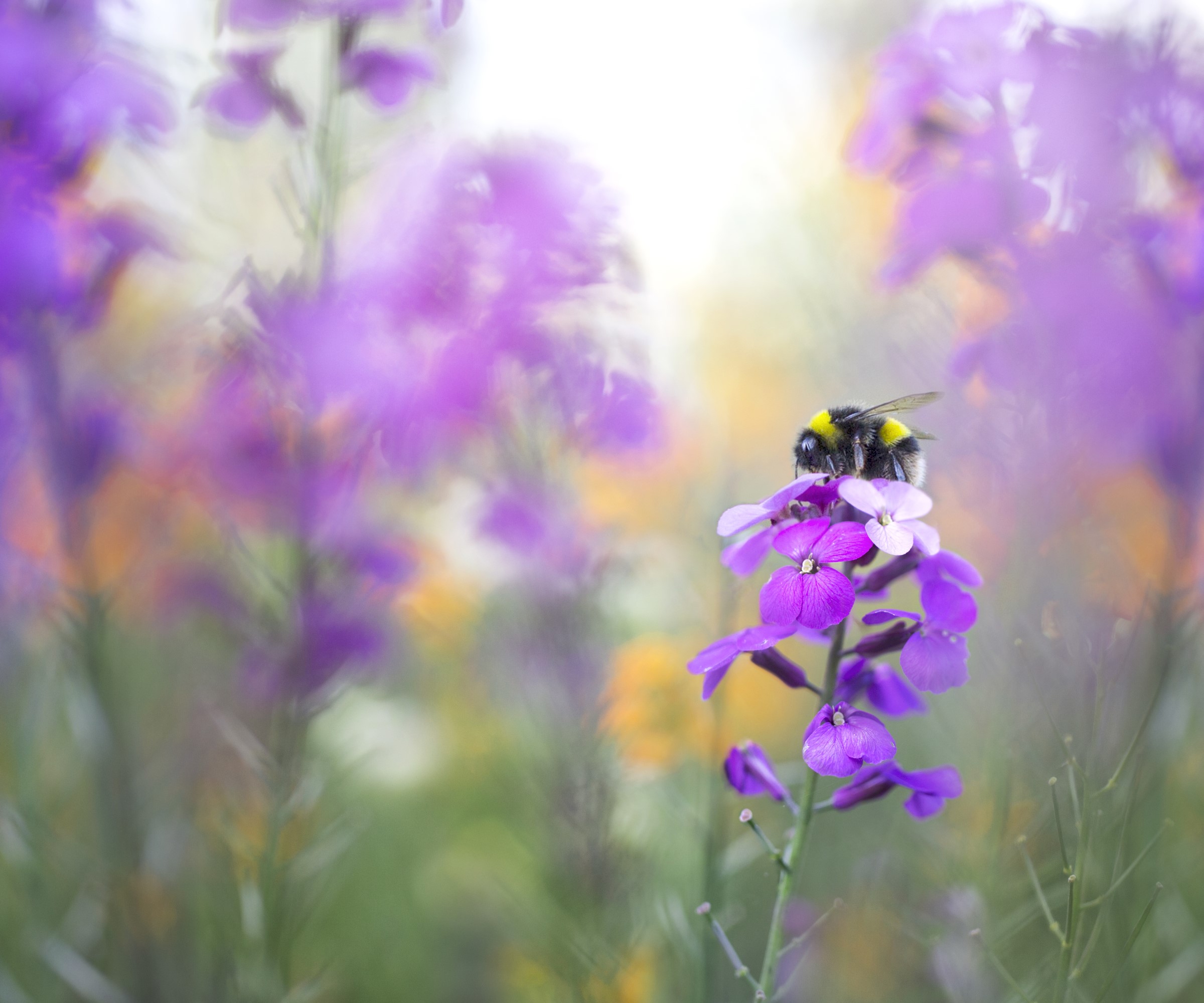
A long display of flowers will be enjoyed by both you and the bees
4. Don’t use pesticides
To put it simply, common insecticides and pesticides kill bees and other beneficial insects that can do so much good in your backyard. Too often the first thought in many gardeners' minds is to reach for the pesticides to deal with common pests and diseases. However, while they may easily solve many problems, they are not kind to bees, who are very sensitive to such chemicals. Even products such as insecticidal soap and diatomaceous earth, often used to get rid of carpenter bees, can be dangerous to use around bees.
It is more environmentally friendly to try organic approaches to dealing with pests and diseases. You can use beneficial predators for pests or make homemade bug sprays as part of more sustainable gardening ideas. While sprays made from the likes of neem oil or copper can be safe, they still need to be used with consideration as they must be dry or dissolved before bees are actively feeding.
Consider using organic or permaculture gardening techniques like companion planting in the backyard, as utilizing beneficial plants can be a natural way to repel pests and combat diseases.
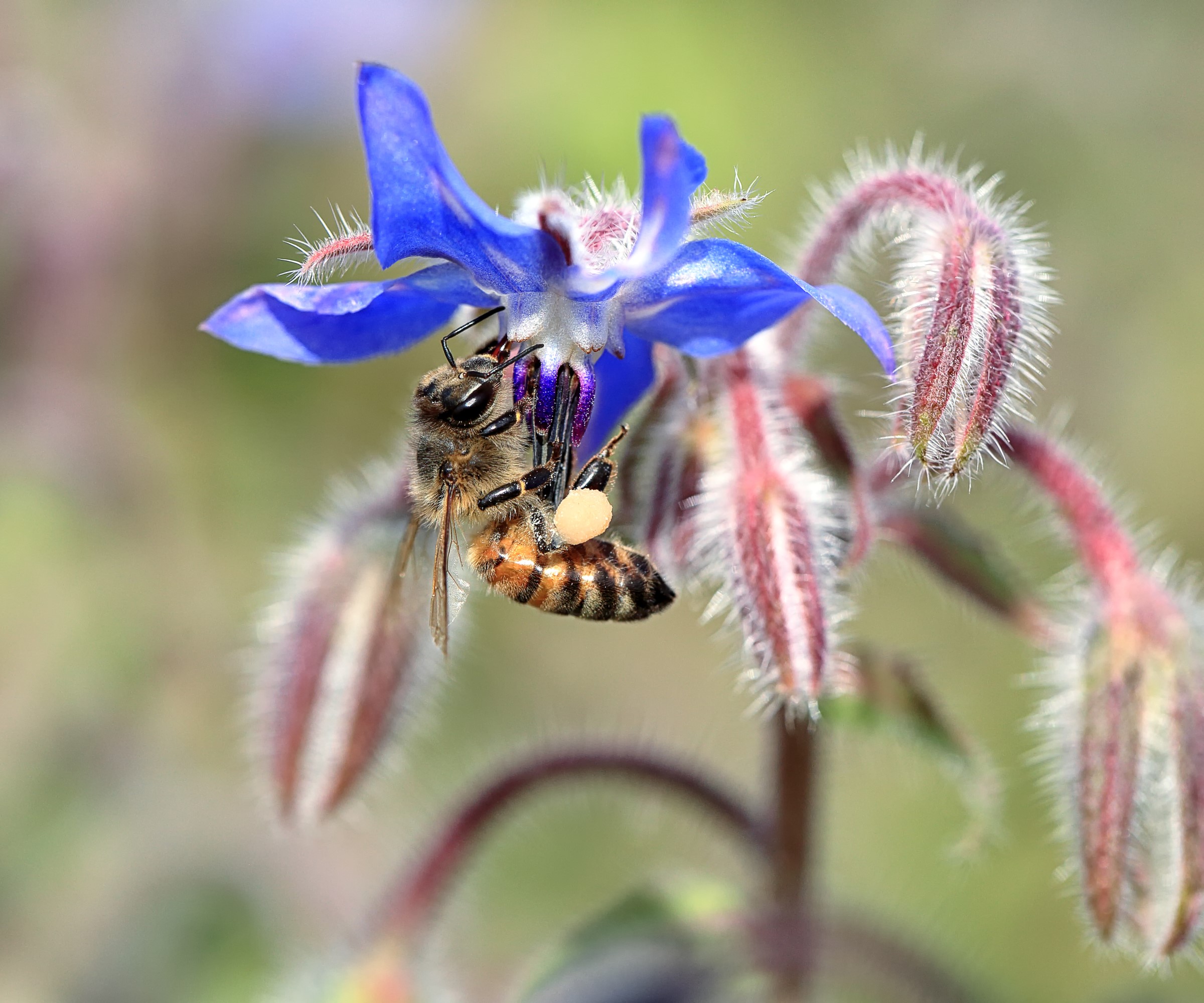
Borage is a very useful companion plant that bees adore
5. Provide safe water
Bees and all pollinators need access to water and providing a safe place for them to land near to water sources can help attract more bees to your garden. Bees need water to regulate their temperatures and putting in a bee watering station can give bees a clean, safe, and easy-to-access place to get water. Bees cannot swim so they need a space where they can land and access water without the risk of drowning. You can make your own bee watering station, or purchase more decorative ones such as the Navaris Bee Watering Station available at Amazon.
Hilary Kearney recommends: ‘A very simple way to help them is to add stones to a bird bath or if you have a fountain, try turning down the water pressure to more of a trickle.
‘Their favorite kind of water source is pond water, but you don’t have to invest in a big in-ground pond to appease them. You can turn a half-wine barrel into a beautiful little low-maintenance pond. Just add some aquatic plants, mosquito fish, and a solar aerator. The bees love to land on the floating plants, and they get extra minerals from the fish and plants.’
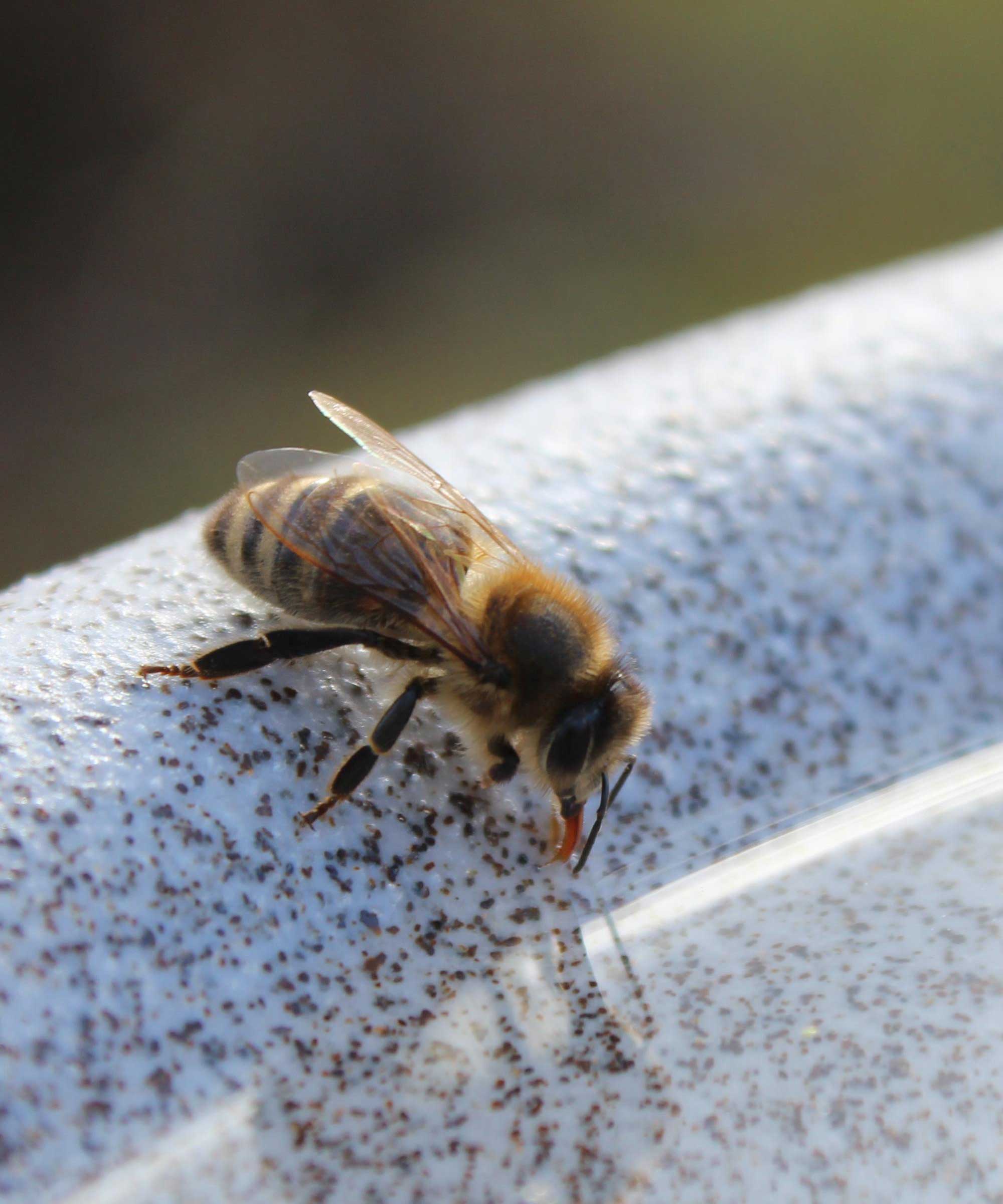
Bees cannot swim so need a safe way to access water
6. Add a bee hotel
The addition of insect houses in a garden can provide a nesting site for bees and other insects. Bee hotels are available to buy, for example the SunVara Mason Bee House available at Amazon, or you can make your own by filling a box with hollow tubes made out of wood, bamboo reeds, or old flower stalks.
A bee hotel is the perfect place for solitary bees that do not live in hives like honeybees do. The solitary bees will nest on their own and lay their eggs in the hollow cavities of the tubes, replicating their natural conditions where they lay eggs in dead wood.
You can also help to support many species of wild bees by leaving branches, deadwood, or other materials around the yard to provide habits for them to live in. By leaving rotting logs, grass piles or even mud it can give bees options for nesting or to simply enjoy a rest.
A bug hotel is becoming a common addition in backyards. A bee hotel is different to a bug hotel but a dedicated space for bees can be implemented into the design of a bug hotel.
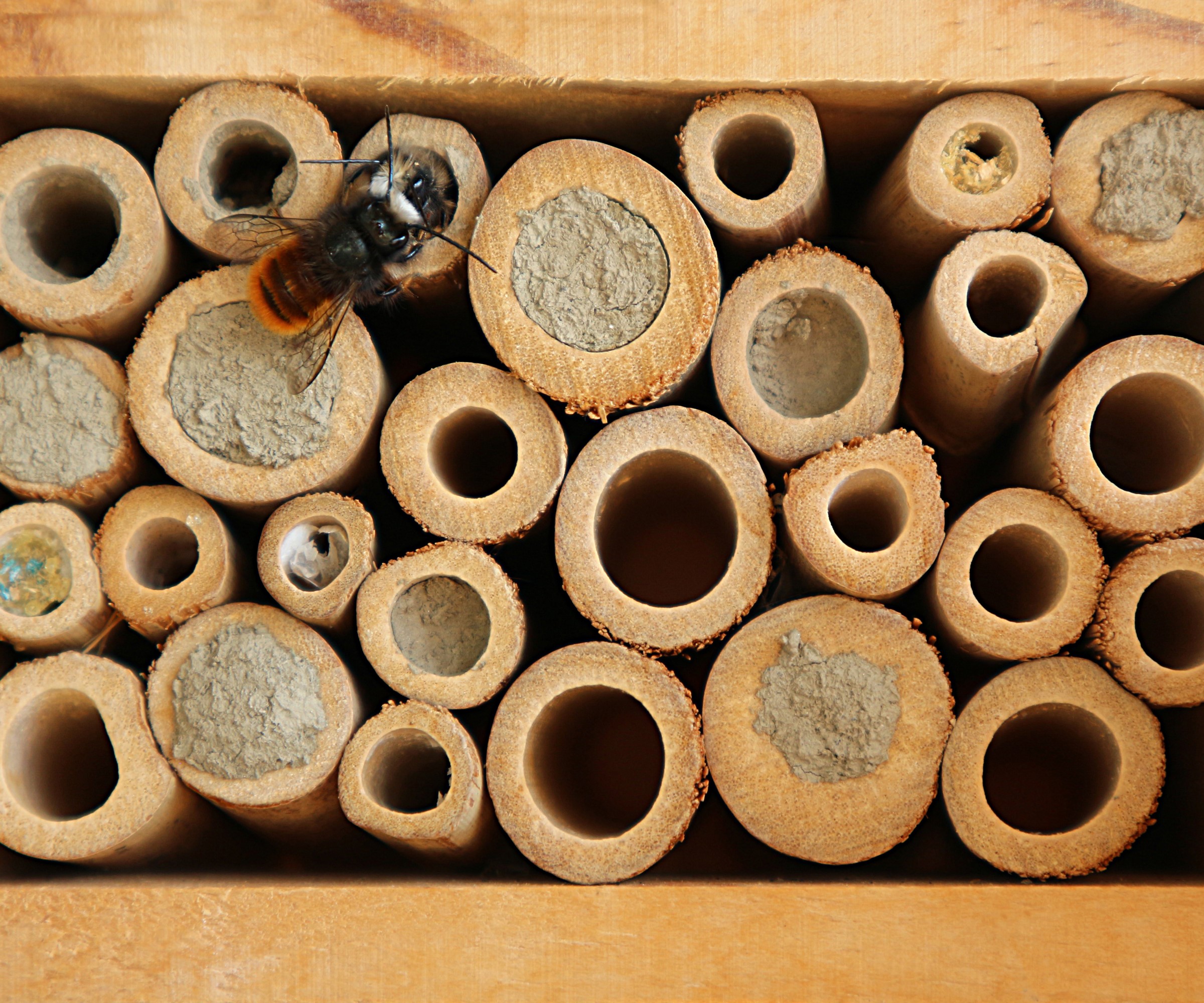
Bee hotels replicate the natural habitats that solitary bees seek
7. Let the lawn grow
If you move past the idea of a pristine lawn then it can help to attract bees to your garden. By changing how often you mow your lawn and not getting the mower out as regularly it will help flower heads and seeds to form, and these are great for attracting bees. Common lawn weeds, including the likes of dandelions and clover, are excellent plants to attract bees.
By leaving your lawn, or just a section of lawn if you cannot stand the idea of leaving the whole area, and allowing the grasses and flowers to grow up to three inches or taller it can be very beneficial for bees. Also refrain from using common lawn pesticides or herbicides that can be harmful to bees.
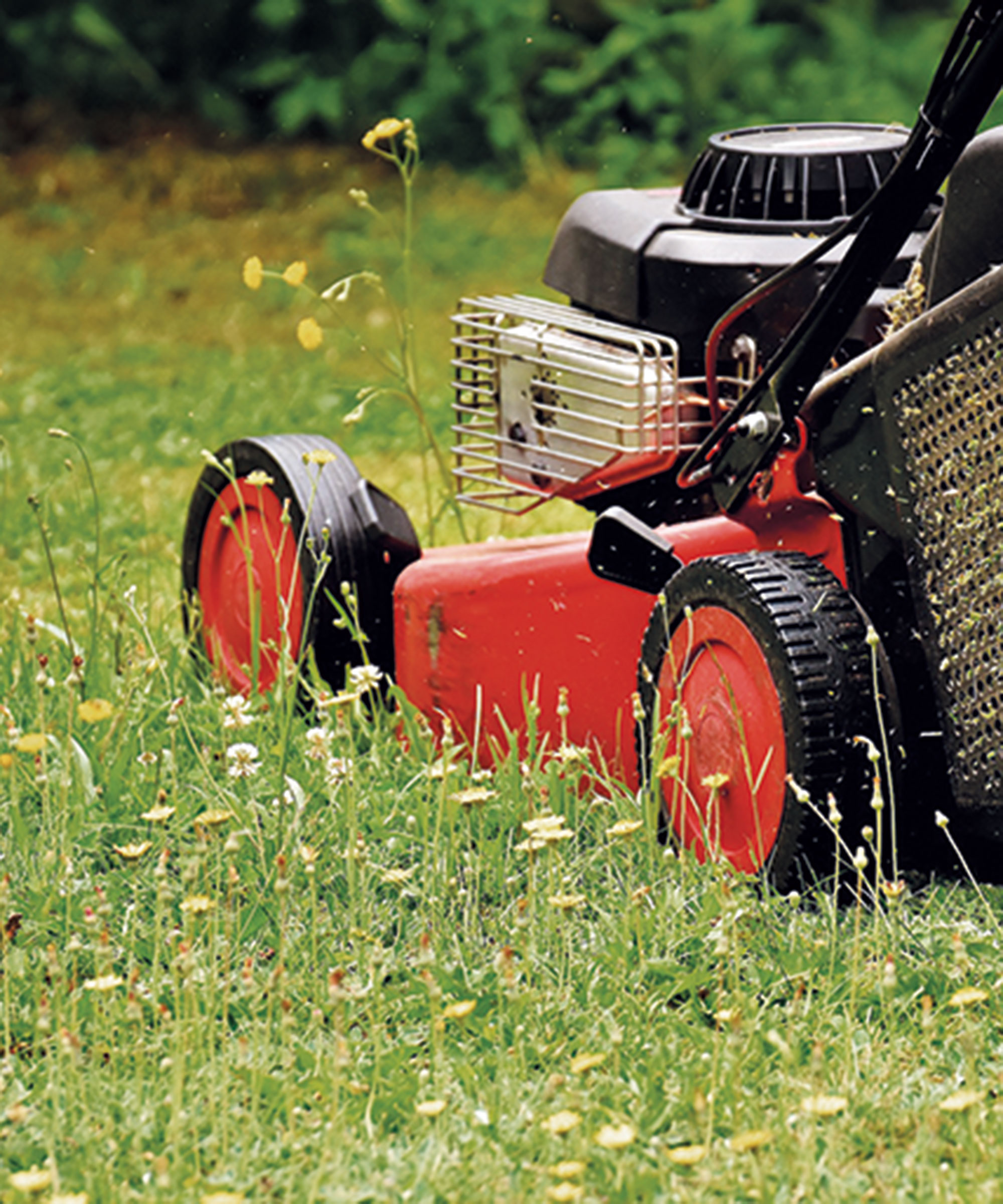
A flowering lawn can be both beautiful and attractive to bees
Bees are highly under-appreciated by many gardeners as they do an invaluable job in ensuring we have flowers to enjoy and fruits and vegetables to eat. It does not take much to make a backyard more bee-friendly and you will reap the benefits when it comes to improved pollination of your plants. Take the opportunity to embrace a wilder and more natural gardening side and make your garden a haven for bees.

Drew has worked as a writer since 2008 and was also a professional gardener for many years. As a trained horticulturist, he worked in prestigious historic gardens, including Hanbury Hall and the world-famous Hidcote Manor Garden. He also spent time as a specialist kitchen gardener at Soho Farmhouse and Netherby Hall, where he grew vegetables, fruit, herbs, and cut flowers for restaurants. Drew has written for numerous print and online publications and is an allotment holder and garden blogger. He is shortlisted for the Digital Gardening Writer of the Year at the 2025 Garden Media Guild Awards.